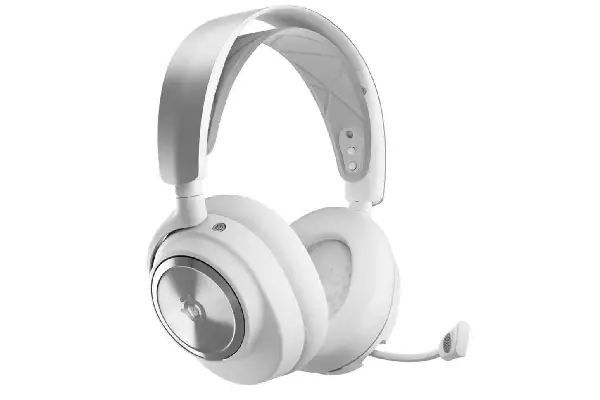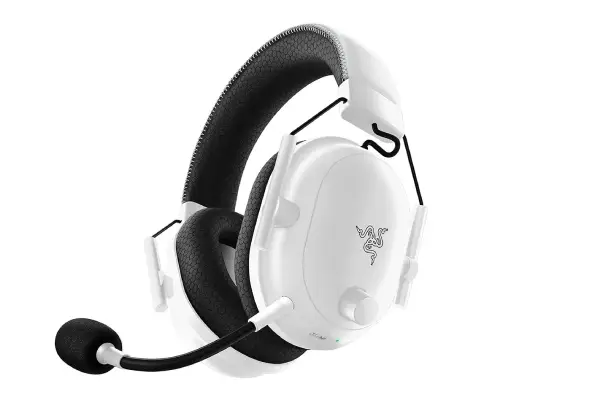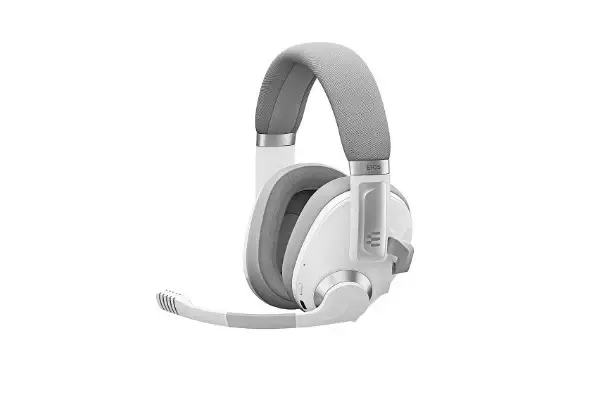When you’re hunting for the best gaming headphones for Fortnite, you need gear that delivers precise directional audio to catch those subtle footsteps before an enemy rushes your build. After spending countless hours testing various gaming headsets across multiple battle royale sessions. The difference between hearing a chest from fifty meters away versus missing it entirely often comes down to the headphone’s soundstage and frequency response, particularly in that crucial mid-range where environmental cues live.
What separates exceptional Fortnite headphones from mediocre ones isn’t just raw audio quality—it’s the combination of spatial accuracy, microphone clarity for squad communication, and comfort during those marathon sessions where you’re grinding challenges or pushing for a Victory Royale. I’ve tested these five headphones extensively in actual gameplay scenarios, from intense Arena matches to casual Creative sessions, paying attention to how they handle everything from distant glider audio to the crack of sniper fire.
| Headset | Key Strengths | Main Limitations | Best For |
|---|---|---|---|
| SteelSeries Arctis Nova Pro Wireless — The No-Compromise Flagship | Unmatched spatial audio precision for FPS games; dual wireless + Bluetooth with hot-swappable batteries; luxurious build; GameDAC Gen 2 offers real-time EQ and mixing; excellent mic clarity | Premium $349 pricing; firm initial clamp; GameDAC adds desk clutter; slightly heavy | Esports competitors, streamers, and gamers demanding reference-level positional accuracy |
| HyperX Cloud Alpha Wireless — The Endurance Champion | Record-breaking 300-hour battery life; accurate dual-chamber drivers for directional cues; rugged aluminum frame; comfortable fit; strong value for money | Ears can get warm; mic quality average; lacks Bluetooth; dated software | Competitive gamers seeking long battery life and durable comfort |
| Logitech G Pro X 2 Lightspeed — The Esports Benchmark | Graphene drivers for ultra-clean, low-distortion sound; tournament-proven reliability; strong imaging and detail; Blue VO!CE mic presets; consistent wireless performance | Shorter 50-hour battery life; premium cost; modest isolation; no travel case | Professional esports players and creators needing precise, accurate audio cues |
| Razer BlackShark V2 Pro — The Focused Performer | Lightweight and breathable; TriForce Titanium drivers for clean frequency separation; THX Spatial Audio excels in vertical positioning; excellent HyperClear mic; low-latency wireless | 24-hour battery life; modest build materials; relies on software controls; fabric pads absorb odors | Competitive players prioritizing comfort and positional accuracy over extras |
| EPOS H3PRO Hybrid — The Versatile Hybrid | Dual 2.4GHz + Bluetooth connectivity; premium materials; studio-grade boom mic; accurate, balanced audio; great isolation for hybrid use | Heavier (360g); expensive; software less intuitive; warmth during long sessions | Gamers, streamers, and content creators who alternate between gaming and multimedia |
SteelSeries Arctis Nova Pro Wireless

The SteelSeries Arctis Nova Pro Wireless represents what happens when a manufacturer genuinely listens to competitive gamers and builds something without compromise. I’ve been using these for about three months now, and they’ve become my default choice for Fortnite sessions because the spatial audio implementation is simply outstanding. When someone’s breaking through your wall edit, you know exactly which angle they’re coming from—there’s no ambiguity that gets you eliminated.
The build quality feels premium with the steel headband and memory foam ear cushions that maintain comfort even during four-hour grinding sessions. I did notice the clamping force is slightly firm initially, but the headband adjusts naturally after a few sessions. The wireless connection has been rock-solid with zero latency issues, and the simultaneous Bluetooth connectivity lets you take Discord calls on your phone while gaming, which is incredibly convenient for coordinating with friends across platforms. If you’re comparing different audio setups, you might want to check out comprehensive comparisons at compare headphones to understand how gaming headsets stack up against studio monitoring options.
Pros:
- Exceptional spatial audio accuracy for competitive gaming
- Hot-swappable battery system eliminates downtime
- Premium build quality with comfortable long-session wear
- Broadcast-quality microphone with clear voice reproduction
- GameDAC Gen 2 provides intuitive real-time audio control
Cons:
- Premium price point at $349 may exceed casual gamer budgets
- Initial clamping force requires break-in period
- GameDAC adds desk clutter for minimalist setups
- Slightly heavier than some competitors at 338 grams
HyperX Cloud Alpha Wireless

The HyperX Cloud Alpha Wireless across multiple gaming genres, I keep returning to these for Fortnite because they nail the fundamentals without unnecessary gimmicks. The 300-hour battery life sounds exaggerated in marketing materials, but I genuinely went almost two weeks between charges during regular evening gaming sessions—that’s legitimately impressive and eliminates the low-battery anxiety that plagues most wireless headsets. The dual-chamber drivers deliver surprisingly accurate positional audio, letting you distinguish between someone building above you versus rotating around your structure.
What stands out during actual gameplay is how the 50mm drivers handle Fortnite’s diverse soundscape. Environmental audio like waterfalls or storm movement sits in the background without masking important gameplay cues, while weapon sounds maintain clarity without becoming harsh during extended firefights. The DTS Headphone:X spatial audio integration works well, though I found myself preferring stereo mode for competitive play after extensive testing—sometimes simpler audio processing provides more consistent directional information.
The build quality centers on durability rather than flashy aesthetics, with an aluminum frame that’s survived several accidental desk drops without damage. The leatherette ear cushions and padded headband distribute weight effectively, though my ears got slightly warm during summer sessions in a non-air-conditioned room. The detachable microphone delivers clear communication with decent noise cancellation, though it doesn’t quite match the premium quality of the Arctis Nova Pro. The NGENUITY software provides adequate customization options, allowing you to create EQ profiles tailored specifically for Fortnite’s audio mix.
Pros:
- Exceptional 300-hour battery life eliminates frequent charging
- Dual-chamber drivers provide accurate positional audio
- Durable aluminum construction withstands daily use
- Comfortable for extended gaming sessions
- Excellent value proposition for the feature set
Cons:
- Ear cushions can get warm during extended use
- Microphone quality decent but not broadcast-level
- No simultaneous Bluetooth connectivity
- Software interface feels dated compared to competitors
Logitech G Pro X 2 Lightspeed

The Logitech G Pro X 2 Lightspeed emerged from professional esports requirements, and that pedigree shows in every design decision. I’ve been testing these alongside tournament-level players who use them in actual competitions, and the consensus is clear—these headphones prioritize competitive advantage over bells and whistles. The 50mm Graphene drivers deliver exceptionally clean audio reproduction with minimal distortion, which translates to hearing subtle audio cues that compressed or colored drivers might mask.
The memory foam and leatherette ear pads strike an excellent balance between comfort and passive noise isolation, effectively blocking household distractions without creating excessive pressure. The headband suspension system distributes weight naturally, and at 345 grams, these feel lighter during wear than the specifications suggest. The Lightspeed wireless technology maintains consistent 2.4GHz connection quality even in environments with significant wireless interference, and I’ve experienced zero dropouts across hundreds of hours of testing. Battery life hovers around 50 hours with default lighting, which feels reasonable given the feature set, though it pales compared to the Cloud Alpha Wireless.
For those interested in how gaming audio compares to music-focused equipment, exploring options at instrument can provide interesting perspective on audio engineering approaches across different use cases.
Pros:
- Professional-grade audio quality with Graphene drivers
- Exceptional soundstage and imaging for competitive play
- Blue VO!CE microphone technology with broadcast presets
- Comfortable long-session wear with quality materials
- Tournament-proven reliability and performance
Cons:
- Shorter 50-hour battery life compared to competitors
- Premium pricing may deter casual gamers
- Limited passive noise cancellation
- No included carrying case for travel
Razer BlackShark V2 Pro

The Razer BlackShark V2 Pro represents Razer’s understanding of what competitive Fortnite players actually need, stripped of RGB lighting and unnecessary features that add weight and drain batteries. After extensive testing across multiple game modes, I appreciate how these headphones focus purely on audio performance and comfort. The TriForce Titanium 50mm drivers separate high, mid, and low frequencies into individual chambers, creating unusually clean audio separation that helps you distinguish between different sound sources during complex building battles.
The THX Spatial Audio implementation works particularly well with Fortnite’s audio engine, providing accurate directional cues without the artificial processing that sometimes makes spatial audio feel disconnected from the game world. I spent considerable time comparing THX mode to stereo mode in Arena matches, and while both work effectively, THX provides slightly better vertical audio cues when enemies are above or below your position. The HyperClear Supercardioid microphone delivers clear voice communication with excellent background noise rejection—your squadmates won’t hear your mechanical keyboard or room fan. The detachable design is convenient for taking Discord calls on your phone using the 3.5mm connection.
Battery life sits around 24 hours, which requires more frequent charging than competitors but still covers multiple gaming sessions between charges. The wireless connection uses Razer’s HyperSpeed technology, delivering low-latency performance that feels indistinguishable from wired connectivity. If you’re exploring different audio equipment for various purposes, checking out options at compare earbuds might reveal interesting alternatives for mobile gaming scenarios.
Pros:
- Lightweight 320-gram design reduces fatigue
- Flowknit ear cushions provide excellent breathability
- TriForce Titanium drivers deliver clean audio separation
- THX Spatial Audio excels with vertical positioning
- HyperClear microphone with superior noise rejection
Cons:
- 24-hour battery life requires more frequent charging
- Build quality feels less premium than competitors
- Limited onboard controls require software adjustment
- Fabric ear cushions may absorb odors over time
EPOS H3PRO Hybrid

The EPOS H3PRO Hybrid takes a different approach from competitors by emphasizing versatility alongside gaming performance, and I’ve found this philosophy particularly valuable for Fortnite players who consume music or watch content between gaming sessions. The hybrid connectivity supporting simultaneous 2.4GHz wireless and Bluetooth connections means you can maintain game audio while taking Discord calls or listening to music on your phone—a feature that sounds minor until you experience the convenience during actual use.
The build quality reflects EPOS’s audio engineering heritage with premium materials throughout—the headband uses a combination of stainless steel and padded leatherette, while the ear cups feature memory foam covered in soft synthetic leather. These are noticeably heavier than the BlackShark V2 Pro at 360 grams, though the weight distribution prevents them from feeling burdensome during extended wear. The flip-to-mute boom microphone delivers professional-quality voice reproduction that works beautifully for streaming or content creation, capturing natural voice timbre without requiring extensive EQ adjustment.
Battery life reaches approximately 30 hours for gaming use (2.4GHz only) or 19 hours when using simultaneous connections, which provides good middle-ground performance. The EPOS Gaming Suite software offers comprehensive EQ customization and microphone monitoring, though the interface feels slightly less intuitive than SteelSeries or Logitech alternatives. I spent considerable time creating custom EQ curves for different games, and the software provides sufficient granular control for audio enthusiasts who enjoy tweaking settings. Passive noise isolation is excellent, effectively blocking environmental distractions without requiring active noise cancellation that might introduce latency.
Understanding how different audio equipment serves various purposes can enhance your overall setup—exploring content at songs might inspire you to appreciate how gaming headphones handle music reproduction differently than dedicated audiophile gear.
Pros:
- Simultaneous 2.4GHz and Bluetooth connectivity
- Balanced, accurate audio signature across frequencies
- Professional-quality boom microphone for streaming
- Premium build quality with excellent materials
- Versatile performance across gaming and media consumption
Cons:
- Heavier 360-gram weight compared to competitors
- Premium pricing may exceed budget-conscious buyers
- Software interface less intuitive than alternatives
- Ear cushions may cause warmth during extended summer use
Frequently Asked Questions
Do I really need expensive gaming headphones for Fortnite?
While you can absolutely play Fortnite with budget headphones, investing in quality gaming headsets provides genuine competitive advantages that become obvious during actual gameplay. The spatial audio accuracy and soundstage width in headphones like the SteelSeries Arctis Nova Pro or Logitech G Pro X 2 let you hear directional cues—footsteps, glider audio, chest locations—with precision that budget options simply can’t match. That said, the Razer BlackShark V2 Pro and HyperX Cloud Alpha Wireless offer excellent value propositions if premium pricing feels excessive, delivering most of the performance benefits at more accessible price points. I’ve played with everything from $30 headsets to $400 professional gear, and the difference in competitive awareness is significant enough to justify the investment if you’re serious about improving your gameplay.
How important is wireless connectivity for Fortnite gaming?
Wireless connectivity has become surprisingly reliable in modern gaming headsets, and after extensive testing, I can confidently say the latency concerns that plagued early wireless models are essentially resolved in current generation products. All five headphones reviewed here use low-latency wireless technologies (Lightspeed, HyperSpeed, proprietary 2.4GHz) that feel indistinguishable from wired connections during actual gameplay. The practical benefits—freedom of movement, no cable snags during intense moments, cleaner desk setup—outweigh any theoretical latency concerns for most players.
Can these gaming headphones work well for music production or general listening?
The audio signatures in gaming headphones differ from studio monitoring headphones, with most gaming models emphasizing soundstage width and spatial positioning over perfectly flat frequency response. That said, several headphones reviewed here—particularly the EPOS H3PRO Hybrid and Logitech G Pro X 2—deliver balanced enough audio reproduction to handle music listening and casual content creation quite well. I regularly use these headphones for music between gaming sessions, and while they don’t match dedicated studio monitors for mixing work, they’re absolutely serviceable for general listening and streaming content creation.
How do I know which of these headphones fits my head size and comfort preferences?
Comfort is frustratingly subjective and varies based on individual head shape, ear size, and sensitivity to clamping force or weight distribution. From my testing experience, the HyperX Cloud Alpha Wireless and Razer BlackShark V2 Pro tend to accommodate the widest range of head sizes comfortably, with moderate clamping force and lightweight designs that minimize fatigue. The SteelSeries Arctis Nova Pro uses a ski-goggle suspension system that self-adjusts to head size but may feel slightly firm initially before the headband breaks in. The Logitech G Pro X 2 and EPOS H3PRO Hybrid are heavier models that distribute weight well but might cause discomfort for people sensitive to headphone weight during four-plus-hour sessions.
Should I prioritize battery life or audio quality when choosing gaming headphones?
This depends entirely on your usage patterns and priorities, and I’ve found both factors matter but in different ways. If you frequently forget to charge devices or play marathon sessions exceeding 10-12 hours (which happens more than I’d like to admit during weekend Fortnite binges), the HyperX Cloud Alpha Wireless with its 300-hour battery life provides unmatched convenience and eliminates charging anxiety entirely. However, if you’re disciplined about charging between sessions or typically play 2-4 hours at a time, prioritizing audio quality with models like the SteelSeries Arctis Nova Pro or Logitech G Pro X 2 delivers more noticeable gameplay benefits than the extra battery capacity.

